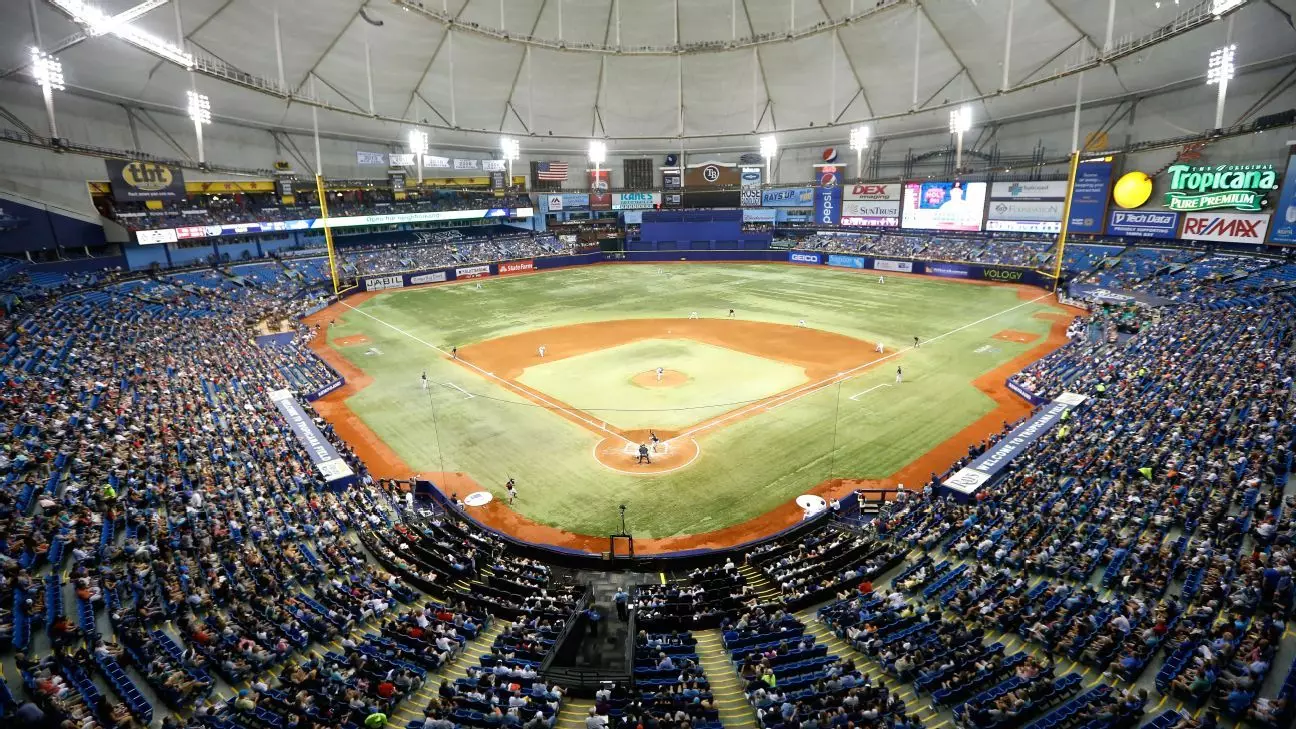The ongoing negotiations between the Tampa Bay Rays baseball franchise and the Pinellas County Commission have reached a boiling point, highlighting the complexities and challenges of securing a new home for the team. At the center of this dispute is a proposed $1.3 billion ballpark meant to revitalize the area and secure a long-term future for the team. However, recent developments indicate that the project is now mired in uncertainty due to disagreements over commitments, funding, and timelines. The county commission’s ultimatum added urgency to the already strained discussions, stirring a mix of frustration and determination from the team’s leadership.
In a letter dated November 25, Rays executives Brian Auld and Matt Silverman firmly stated that their agreement to build the new ballpark remains intact despite the Pinellas County Commission’s scrutiny. They emphasized that the organization has invested over $50 million into the project, underscoring their commitment and involvement. Their assertion resounds with a sense of urgency, given that the county has effectively put work on the stadium on hold, jeopardizing its anticipated opening date in 2028. The Rays indicated that circumstances need to change if the project is to continue on its planned trajectory, but the smoke of uncertainty looms heavily over their future.
The ultimatum issued by Kathleen Peters, chairperson of the Pinellas County Commission, requested a clear response from the Rays by December 1 regarding their commitment to the stadium deal. This demand for clarity illustrates a power dynamic that has turned confrontational, as the county wrestles with funding mechanisms and various internal opinions about the viability of the $1.3 billion investment. The tension escalated as Auld and Silverman responded, stating that the agreements remain „in effect“ until formally terminated. Their letter is a strategic move designed to reiterate their ongoing commitment, even in the face of obstacles thrown up by county officials.
Crucial to understanding the situation is the miscommunication that has complicated relations between the Rays and county officials. Auld’s previous dialogue with county commissioner Brian Scott has been misinterpreted as a sign of wavering commitment from the Rays. In a vigorous defense, Silverman clarified that discussions about the condition of Tropicana Field and the challenges posed by Hurricane Milton were misrepresented. This highlights the fine line between transparency and perceptions of commitment and raises concern over how public communication can be misconstrued, potentially influencing stakeholders‘ opinions about the team’s intentions.
Compounding issues, the Rays‘ upcoming 2025 home season appears to be disrupted due to significant damage to Tropicana Field from hurricane-related incidents. This dramatic turn means the team will need to relocate its home games to George M. Steinbrenner Field in Tampa, a move that not only disrupts fan engagement but also begs questions about long-term implications for community support. With infrastructure already strained and faced with relocating, the urgency of resolving stadium issues has never been clearer. As the 2025 season looms, the organization must not only navigate its future venue but also stabilize its relationship with local government.
As we reflect on the current state of affairs between the Tampa Bay Rays and Pinellas County, one undeniable truth emerges: the future of baseball in the region is hanging in the balance. The convergence of financial pressures, public relations issues, and logistical complications from natural disasters creates a precarious environment. The Rays must continue to advocate for their interests while navigating the bureaucratic landscape of local government. Moving forward, stakeholders on both sides of the discussion will need to engage in open dialogue, redefine commitments, and work collaboratively to arrive at solutions that not only benefit the team but also serve the broader interests of the community. Only then can both parties chart a clear path forward that culminates in the construction of a new ballpark and a renewed sense of trust and cooperation.


Napsat komentář